Tea for People Who Don't Like Tea
Many individuals find that they are not fond of tea for various reasons, related often to personal taste preferences and past experiences. Your aversion might also come down to certain sensory factors. Recognizing why you may not enjoy tea can help you better navigate your beverage choices.
Common Reasons
Genetic Makeup: Some people have a genetic predisposition that makes them sensitive to bitter flavors, which are characteristic of some teas. In this case, your biological taste receptors might be more likely to pick up on these flavors, causing a natural aversion to tea.
Preparation and Quality: A negative experience with poorly prepared tea, such as over-steeping which leads to excessive bitterness, or low-quality tea with impurities, can lead to a long-standing dislike. High tannin content in some black teas might also make them particularly astringent, which not everyone appreciates.
Bestsellers
| Factor | How It Influences Aversion |
|---|---|
| Over-extraction (Steep Time) | Increased bitterness |
| Tea Quality | Varied flavor and freshness |
| Incorrect Water Temperature | Potential for scalding leaves or weak extraction |
Sensory Preferences
Flavor Profile: You might prefer beverages with sweet, fruity, or creamy profiles over the earthy, grassy, or floral notes common in many teas. Your palate's preference plays a significant role in whether you appreciate the complex flavor notes in various types of tea.
Texture: Tea can vary in texture, from smooth to astringent. Aversions can arise if you are sensitive to the astringency, a sensation similar to dryness, that tea leaves can produce in the mouth.
Aroma: The scent of tea is a critical aspect of its flavor and can also be a source of aversion. The complexity of tea aromas ranges significantly, and you might be put off by these if they don't align with your olfactory preferences.
-
Flavor:
- Earthy
- Grassy
- Floral
-
Texture:
- Smooth
- Astringent
-
Aroma:
- Mild
- Intense
By understanding the specifics behind your aversion to tea, you might better pinpoint what it is about the beverage that doesn't suit your tastes, or you could explore alternatives that align more with your sensory preferences.
Introduction to Tea Varieties
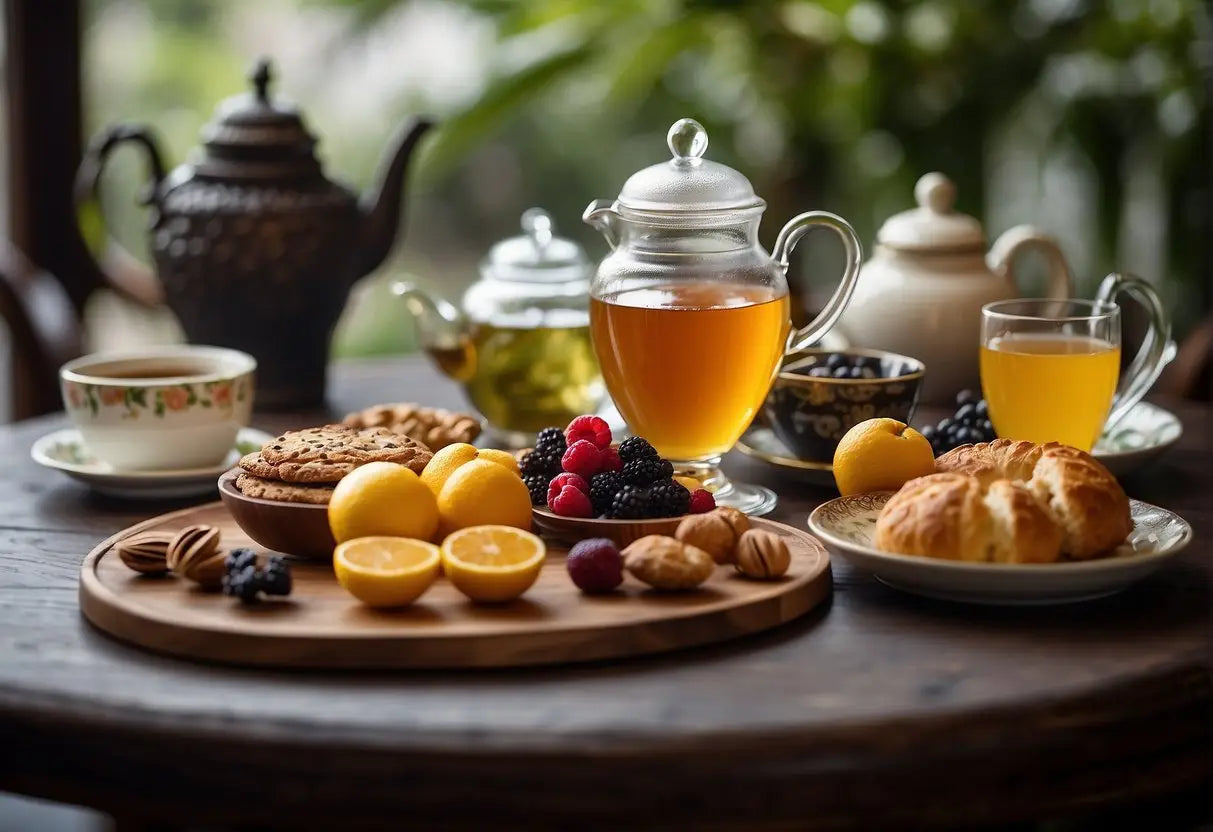
Exploring the world of tea offers a vast array of flavors and experiences. With each variety comes a unique profile and brewing technique that caters to different tastes and preferences.
Green Tea
Origin: Primarily sourced from China and Japan.
Flavor profile: Ranges from grassy to sweet, often with a slight bitterness.
Brewing tips: Best steeped at lower temperatures around 175°F (79°C) to prevent bitterness.
Herbal Tea
Ingredients: A blend of herbs, spices, flowers, or fruits.
Flavor profile: Can be sweet, spicy, floral, or earthy, depending on the mix.
Caffeine content: Generally caffeine-free, except for blends containing mate or guarana.
White Tea
Characteristics: Least processed tea; harvested while young.
Flavor profile: Delicate, light, and slightly sweet, with floral undertones.
Brewing tips: Requires low brewing temperatures, similar to green tea, around 160-185°F (71-85°C).
Oolong Tea
Production: Partially oxidized, offering a spectrum from green to black teas.
Flavor profile: Complex, sometimes floral or fruity, with a hint of creaminess.
Brewing tips: Often best around 185-205°F (85-96°C), varying with oxidation levels.
Pu-erh Tea
Traits: Aged and fermented, often formed into cakes or bricks.
Flavor profile: Earthy, deep, and rich, with some having a musty note.
Brewing tips: Can use boiling water, around 212°F (100°C), and supports multiple infusions.
Fruit Infusions
Composition: Typically blends of dried fruits, and sometimes includes herbs and flowers.
Flavor profile: Sweet and tart, intensely fruity.
Caffeine content: Naturally caffeine-free unless combined with tea leaves.
Lao Ban Zhang
Flavor Enhancement Strategies
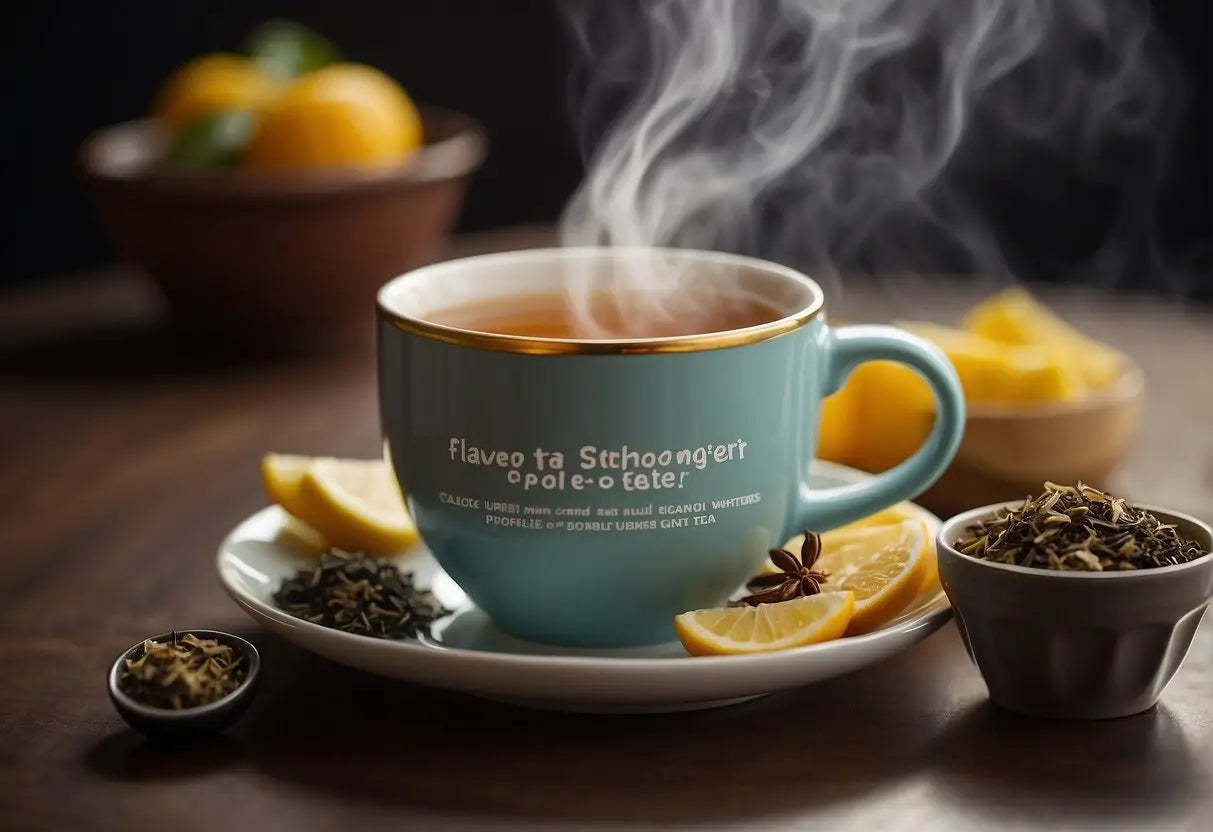
To transform your tea experience, various natural ingredients can be added to address your taste preferences.
Natural Sweeteners
If you find tea bitter, consider sweetening it with natural alternatives. Honey and maple syrup can enrich your beverage with a nuanced sweetness. Additionally, Stevia leaves can provide sweetness without the calories found in sugar.
| Sweeteners | Flavor Notes |
|---|---|
| Honey | Floral, varies with honey type |
| Maple Syrup | Woody, caramel-like |
| Stevia | Sweet, slightly bitter aftertaste |
Citrus Notes
For a fresh, tangy twist, add a squeeze of lemon or lime. These citrus fruits can brighten the tea and reduce any astringency. Orange peel can also add depth with its essential oils contributing a subtle, fragrant aroma.
- Lemon: Sharp, fresh acidity
- Lime: Bright, tangy sharpness
- Orange Peel: Sweet citrus fragrance
Spice Infusions
Spices can warm up your tea and add complex flavors. Cinnamon imparts a sweet, woody note, while ginger offers a spicy kick. Cardamom can introduce a sweet, aromatic profile.
- Cinnamon: Sweet, woody warmth
- Ginger: Spicy, pungent heat
- Cardamom: Sweet, aromatic complexity
Brewing Techniques for Mild Flavors
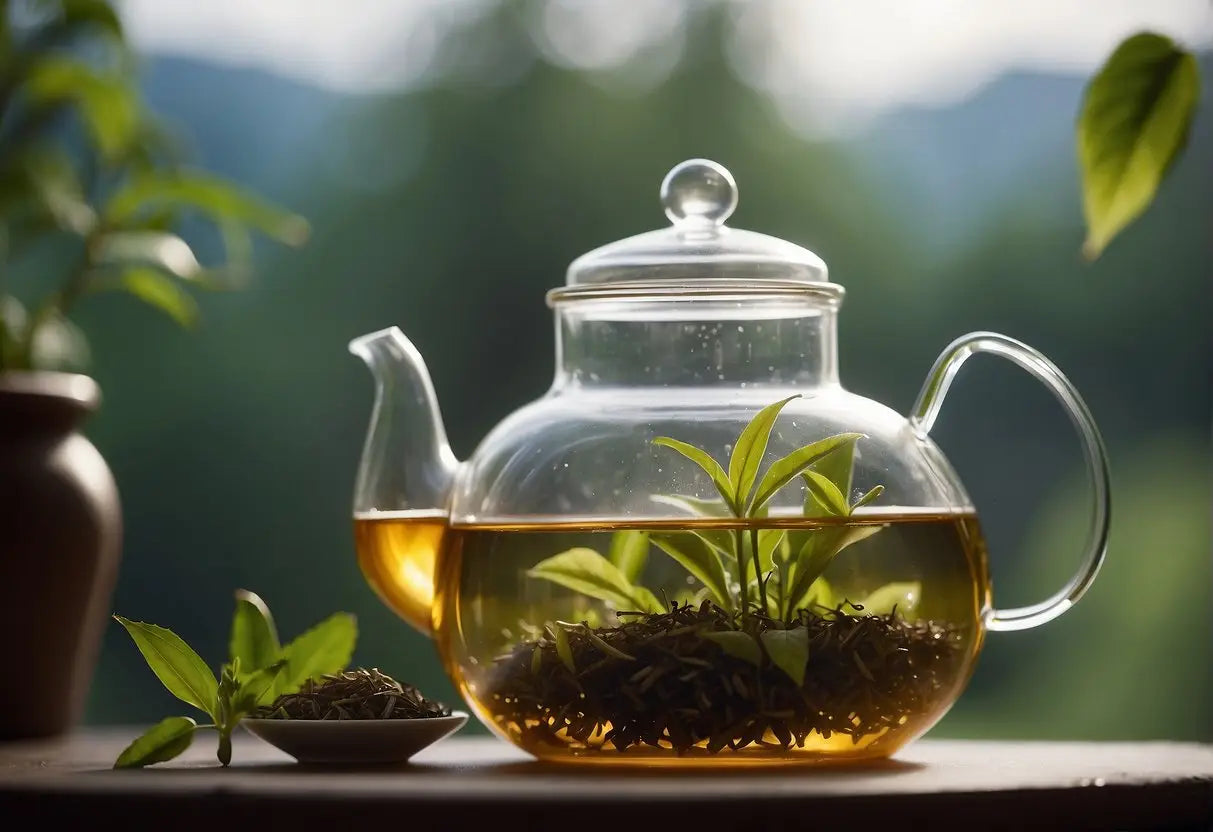
Adjusting water temperature and steeping time can significantly influence the flavor intensity of your tea. These factors can be controlled to create a milder taste, even if you typically find tea to be too strong or bitter.
Water Temperature
Use cooler water to prevent over-extraction, which can lead to bitterness. For most teas:
- Green Tea: Aim for water between 150°F to 170°F.
- White Tea: Heat water to a range of 160°F to 185°F.
- Oolong Tea: Keep water between 180°F to 190°F.
- Black Tea: Although traditionally brewed with boiling water, try 180°F to 200°F for a milder flavor.
Steeping Time
Shorten the steeping duration to avoid releasing too many tannins, which can make the tea taste bitter:
- Green Tea: Steep for 1 to 2 minutes.
- White Tea: Limit steeping to 1 to 3 minutes.
- Oolong Tea: Steep for 1 to 3 minutes.
- Black Tea: Try steeping for 2 to 3 minutes.
By following these guidelines, you can tailor your tea brewing process to produce a milder, more palatable flavor if you're sensitive to strong tastes.
Exploring Cold Teas
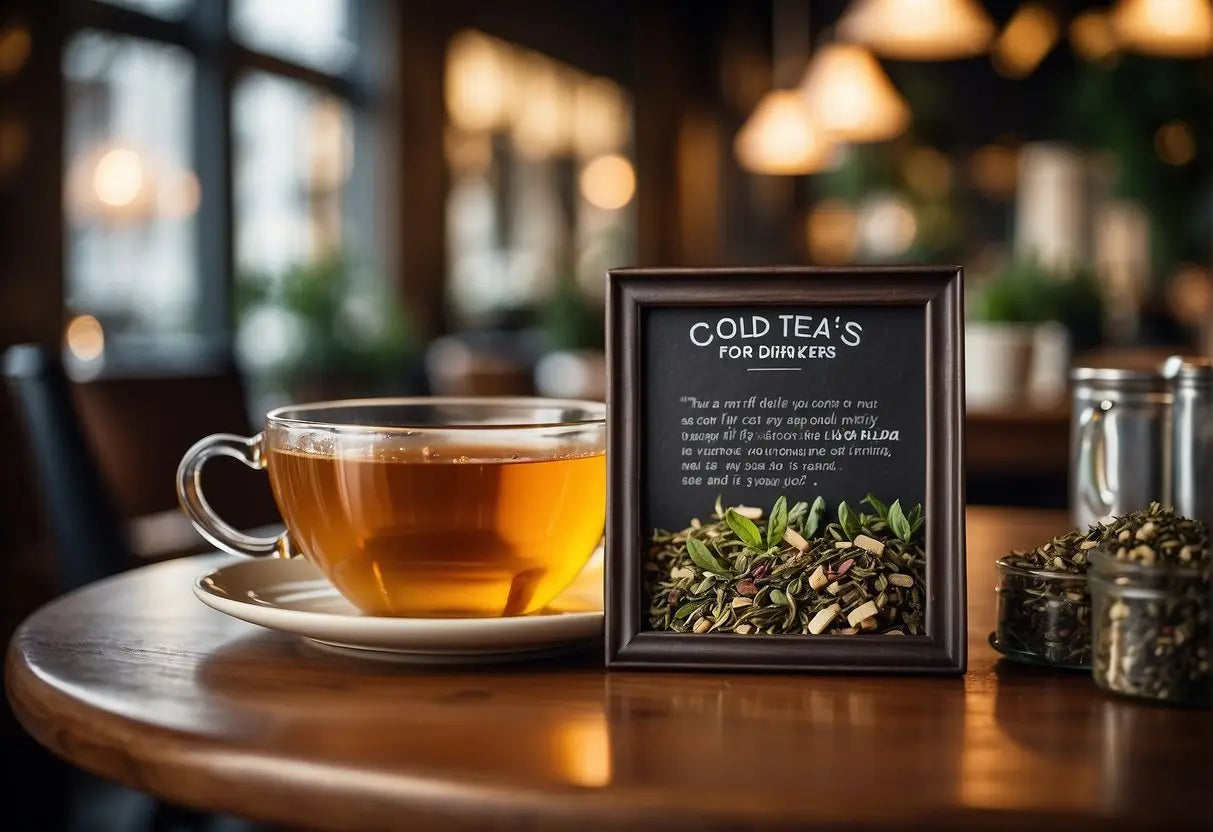
Cold teas present an alternative to traditional hot brews, offering a refreshing taste and a variety of flavors that may appeal to your palate.
Iced Teas
Iced teas are typically hot-brewed teas that are then chilled by pouring over ice. Flavor intensity can vary depending on the brewing time and the amount of ice used. Common types of iced teas include black, green, and herbal.
-
Preparation methods:
- Hot Brew: Brew tea with hot water, then cool down rapidly by pouring over ice.
- Sun Tea: Place tea bags in water and let them sit in sunlight to brew slowly, then chill.
Note: Sweeteners or lemon slices are often added to enhance flavor.
Cold Brew Teas
Cold brew teas are steeped in cool water for an extended period, usually from 6 to 12 hours. The slow extraction process using cold water yields a smooth, mild flavor profile with reduced bitterness.
-
Benefits:
- Less Astringency: Gentle steeping minimizes tannins, reducing bitter notes.
- Rich in Antioxidants: Preserves polyphenols, contributing to potential health benefits.
| Step | Description |
|---|---|
| Tea Selection | Choose loose leaf or quality tea bags for optimal taste. |
| Water Ratio | Use about 1-2 teaspoons of tea per 6 ounces of water. |
| Steeping Time | Let steep in the refrigerator for at least 6 hours. |
| Straining | Remove leaves or tea bags after steeping. |
Serving Suggestions: Enjoy as-is, or add fruits and herbs for a personalized touch.
Tea Alternatives

If you're not fond of traditional teas, consider exploring these appealing alternatives. Each offers distinct flavors and benefits to suit a variety of palates.
Rooibos
Rooibos, also known as red bush tea, originates from South Africa. This beverage is naturally caffeine-free and presents a sweet, nutty flavor. It's rich in antioxidants and has been hailed for its potential to improve heart health.
Yerba Mate
Yerba Mate is a traditional South American drink made from the leaves of the Ilex paraguariensis plant. Recognized for its earthy taste, it contains caffeine, and enthusiasts often praise its ability to offer a smooth energy boost without the jitteriness associated with coffee.
Chamomile
Chamomile tea is crafted from the flowers of the chamomile plant. With its mild, floral essence and a whisper of apple-like sweetness, it's known for its soothing properties. It's commonly used to promote relaxation and may aid in reducing inflammation.
Health Benefits of Tea
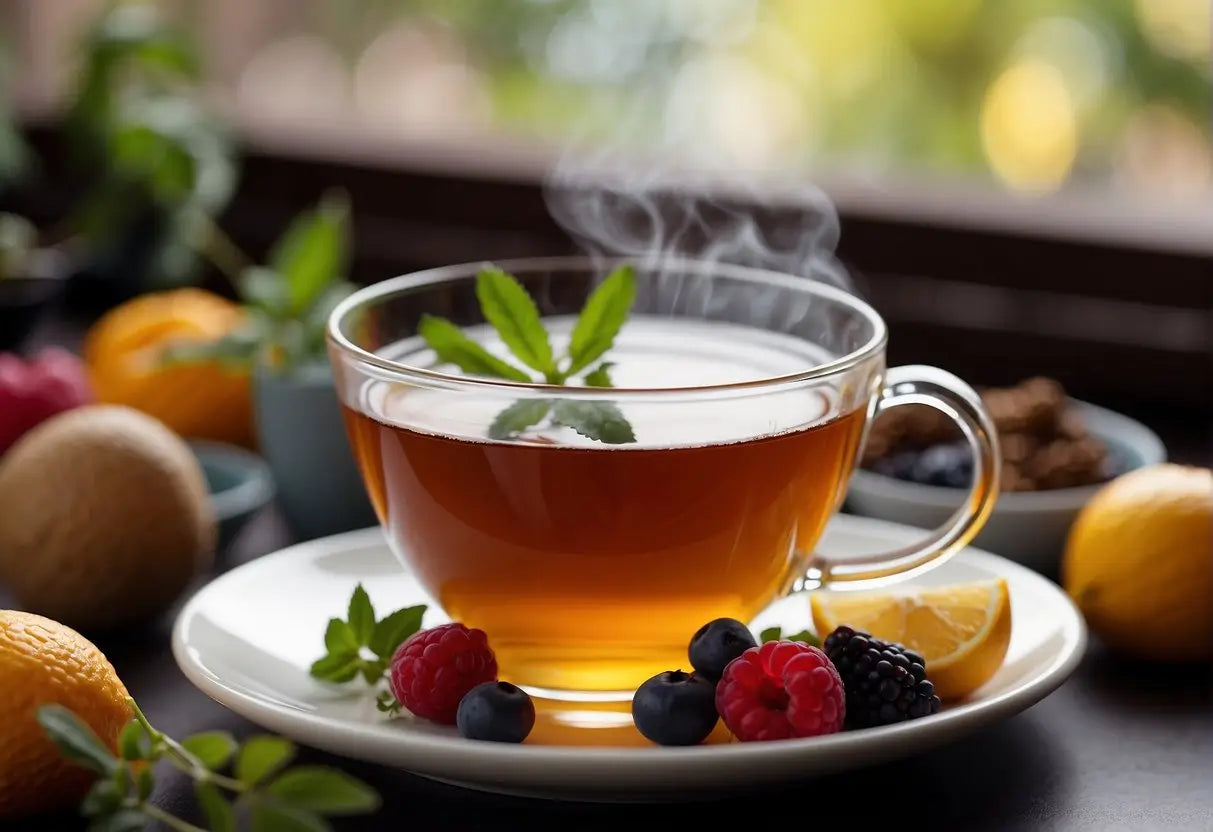
When you sip a cup of tea, you're not just enjoying a warm beverage. Tea contains antioxidants that can help protect your cells from damage. These antioxidants could potentially reduce the risk of certain chronic diseases.
Catechins, a type of antioxidant found in tea, may benefit your heart health. They've been associated with a potential reduction in the likelihood of cardiovascular diseases. Green tea, in particular, is rich in these catechins.
In addition to heart health, tea may support your brain. Components such as L-theanine, an amino acid in tea, together with modest amounts of caffeine, can help improve brain function. This might lead to better focus and mental clarity.
Drinking tea could also be beneficial for weight management and metabolic health. The compounds in tea can slightly increase metabolism and fat burning, although these effects are relatively modest.
Here's a quick reference guide to the potential health benefits of drinking tea:
- Antioxidants: Protects against cellular damage.
- Heart Health: Linked to lower risks of heart disease.
- Brain Function: Promotes improved focus and clarity.
- Weight Management: May aid in boosting metabolism.
Remember to consider that these benefits can vary based on the individual, the type of tea, and the quantity consumed. Tea should be consumed as part of a balanced diet and healthy lifestyle for best outcomes.
Pairing Tea with Food
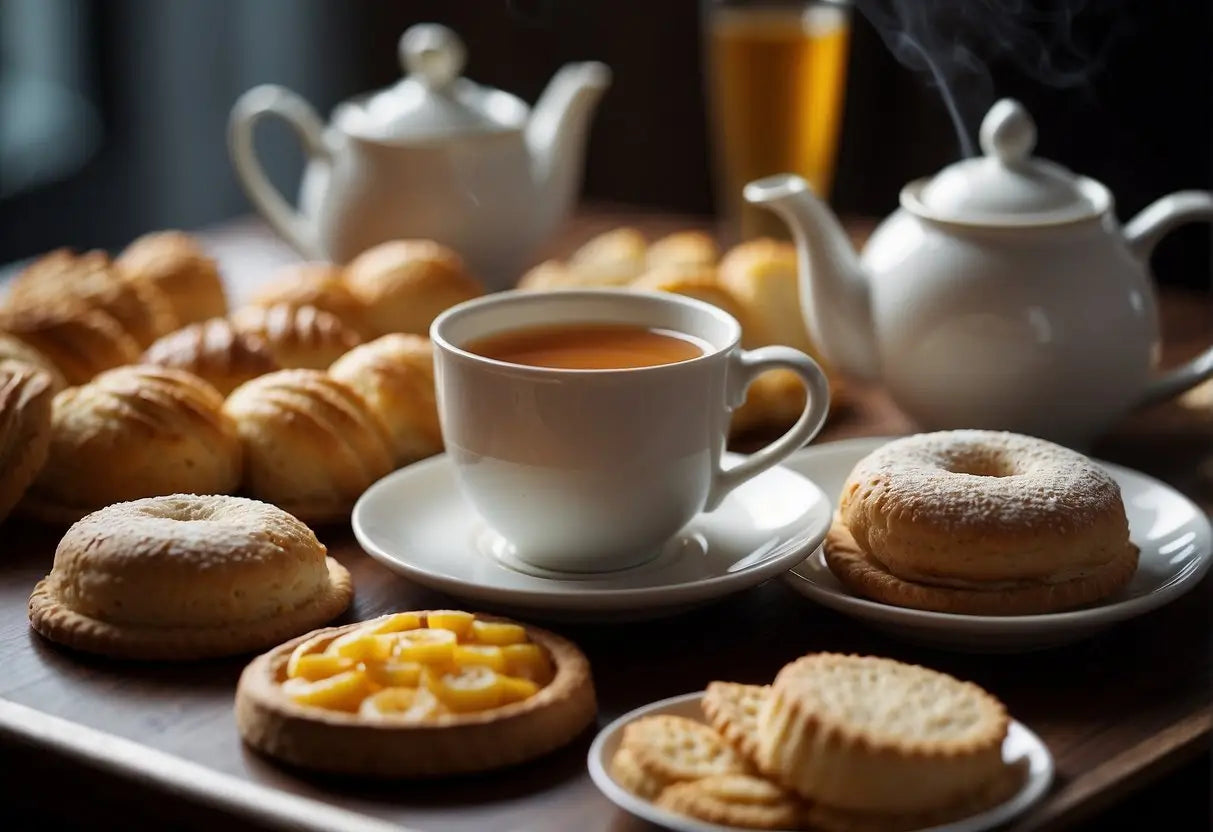
When exploring the world of tea, consider pairing it with food to enhance your experience. The right match can highlight both the tea's aroma and the food's flavor.
Black Tea: Strong and robust, black tea pairs well with hearty foods. Enjoy it with:
- Meat dishes
- Rich chocolate desserts
- Spicy meals
Example: English Breakfast tea with a full English breakfast.
Green Tea: With its delicate flavor, green tea complements lighter, subtler dishes. Try it with:
- Seafood
- Salads
- Mild cheese
Example: Sencha with sushi.
Oolong Tea: Oolong's complexity works nicely with a range of foods, from sweet to savory. Pair it with:
- Grilled vegetables
- Fruity desserts
- Seafood
Example: Tie Guan Yin with dim sum.
White Tea: Subtle and sweet, white tea suits mild and lightly flavored dishes, such as:
- White fish
- Rice
- Simple pastries
Example: Silver Needle with poached salmon.
Herbal Tea: Without caffeine, herbal teas offer versatility, pairing well with many foods. Choose from:
- Light cakes
- Salads
- Comforting soups
Example: Chamomile with lemon drizzle cake.
Here's a simple guide to get you started:
| Tea Type | Food Match | Example Pairing |
|---|---|---|
| Black | Hearty & spicy foods | English Breakfast & meat pie |
| Green | Light & fresh foods | Sencha & steamed fish |
| Oolong | Varied, rich flavors | Oolong & roasted duck |
| White | Mild, delicate foods | Silver Needle & chicken salad |
| Herbal | Diverse options | Peppermint & chocolate cake |
Experiment with flavors and discover what works for your palate. You may find a new appreciation for tea alongside your favorite dishes.
Frequently Asked Questions
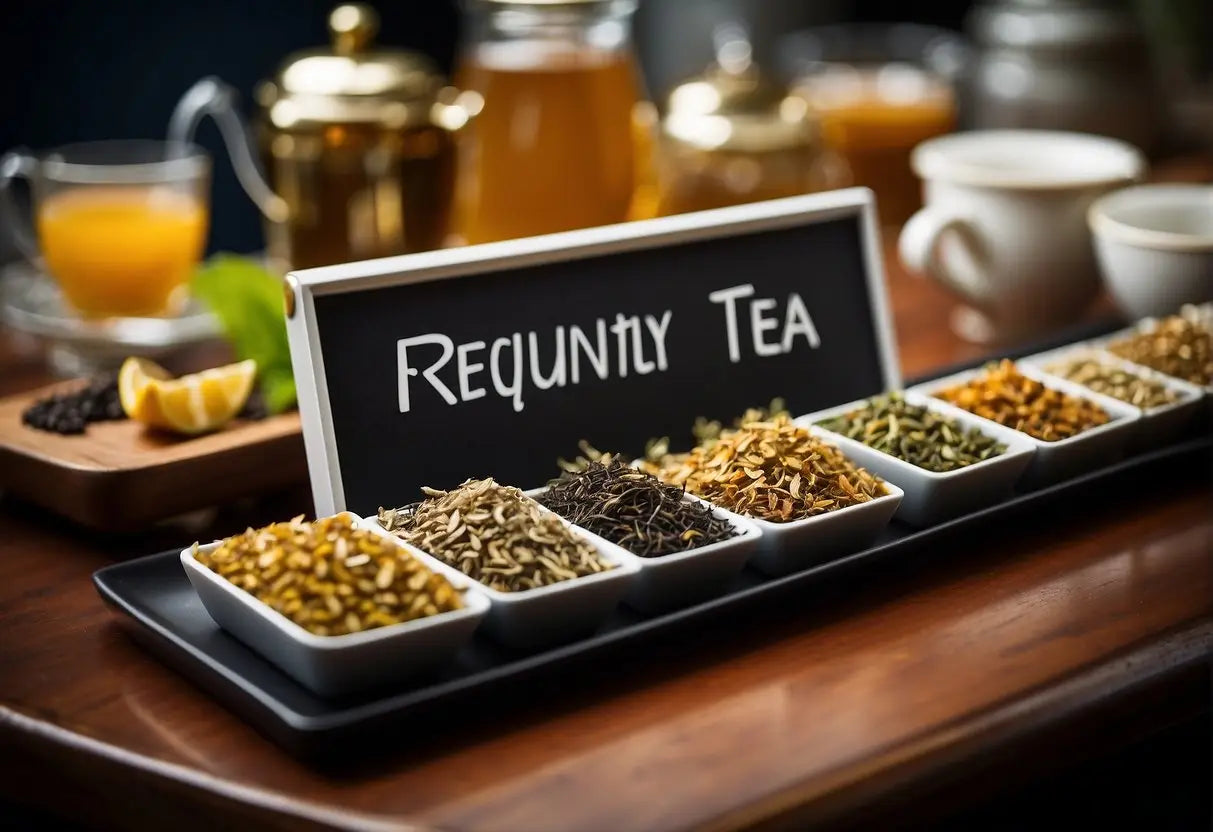
In this section, you'll find tailored suggestions to help you explore the world of tea, even if you've previously not enjoyed it.
What types of tea have a mild flavor suitable for those new to tea drinking?
White teas like Silver Needle or White Peony offer a delicate and slightly sweet flavor. They are less processed than other teas, which results in a milder taste that might be perfect for your introduction to tea drinking.
Which herbal teas are recommended for individuals who prefer non-traditional tea flavors?
Chamomile and peppermint teas are popular among those who may not enjoy the traditional taste of tea. These herbal teas provide a relaxing aroma and a flavor that doesn't mirror typical tea profiles.
What are some fruit-infused teas that might appeal to someone who doesn't typically enjoy tea?
Fruit-infused teas such as berry blends or citrus-infused varieties, like lemon or orange, offer a tangy and refreshing taste that can be a great alternative for those who shy away from traditional tea flavors.
Are there teas that resemble the taste of juice which might be more appealing to non-tea drinkers?
Hibiscus tea has a tart flavor that can be similar to cranberry juice, and when sweetened, it might be attractive to those who haven't enjoyed tea in the past. Cold-brewing such teas can enhance the juice-like experience.
What are the best brands to consider for high-quality, beginner-friendly teas?
Look for brands like Twinings, Celestial Seasonings, or Teavana, as they offer a wide range of beginner-friendly options and provide tasting notes to help you choose flavors that you may prefer.
Can you suggest any teas with potential health benefits for those who haven't acquired a taste for tea yet?
Green teas, such as Matcha or Sencha, have a reputation for numerous health benefits, including high antioxidant content. If the taste is too strong, start with flavored green teas like those infused with mint or jasmine to ease your way in.
← Older post Newer post →











